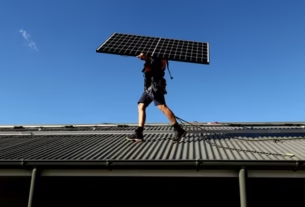In Short : The Clean Energy Movement Fails as Industry Calls for Improved Communication and Policy
Serious questions concerning the current auction system and investor mood in the renewable energy sector were raised when Germany’s first offshore wind tender of 2025, which planned to install 2.5 GW of capacity in the North Sea, ended without getting a single bid.
What took place?
Two project locations were featured in the tender: N-10.1 (2,000 MW) and N-10.2 (500 MW).
Energy developers were expected to submit ideas by the deadline, but none did.
Why Are There No Bids?
Germany’s “negative bidding” paradigm, in which developers pay for the right to create without assurance of support like Contracts for Difference (CfDs), is the main issue raised. Even for significant participants in clean energy and renewable energy, this raises project risk and restricts bankability.
Industry Response
“This has nothing to do with disinterest. One of the top European consultants for renewable energy stated, “It’s about policy misalignment.”
A growing demand for reforms that guarantee equitable returns and lessen uncertainty is reflected in the lack of bids.
Stronger Communication Is Necessary
According to experts, this result might have been avoided with clearer policy requirements and more sustainability communication. The absence of investor-friendly messaging highlights a weakness in German authorities’ public relations campaigns.
The Function of Digital Interaction
Rebuilding trust and luring developers to future tenders may be accomplished with a targeted digital marketing approach. Digital platforms must be used to effectively communicate risk assessments, long-term incentives, and clear, easily available tender procedures.
In conclusion
The outcome of Germany’s 2.5 GW offshore wind contract is more than just a botched bid; it’s a need for immediate policy change and improved communication. The nation must use effective digital and public communication tools to actively involve stakeholders and match auction design with market dynamics if it is to maintain its position as a global leader in clean energy.




